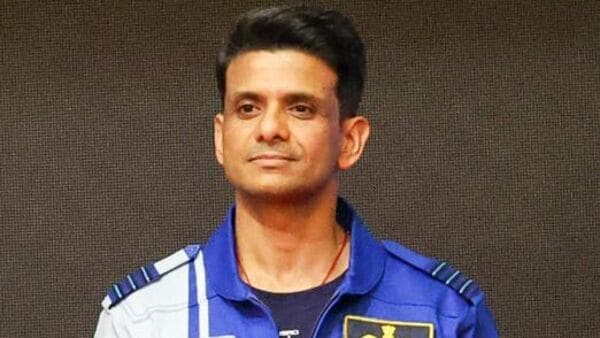
Table of Contents
First Reaction from Orbit: “What a ride!” marks India’s proud moment in space exploration.
Indian Group Captain Shubhanshu Shukla has made history with an emotional first message from space, exclaiming “What a ride!” This powerful declaration came shortly after his Dragon Capsule, now named “Grace,” successfully reached orbit, marking India’s significant return to human space exploration after four decades.
Shubhanshu Shukla’s First Words from Space
Just minutes into his orbital flight, Group Captain Shubhanshu Shukla, visibly moved, addressed the nation from an astounding altitude, orbiting Earth at 7.5 kilometers per second. His poignant message, “Namaskar mere pyare Deshvasiyo… We’ve returned to space after 40 years, and it was a fantastic ride,” resonated deeply, igniting national pride.
Holding the Indian Tricolour on his shoulder, Shukla emphasized the collective achievement: “I have my Tricolour on my shoulder which tells me that I am not alone and that I am with all of you. This is not the beginning of my journey to the ISS but the beginning of India’s human spaceflight programme. I want all Indians to be part of this journey. All your chests must swell in pride and must be as excited. Let’s begin India’s human spaceflight journey together. Jai Hind. Jai Bharat.”
The Ax-4 Mission: Journey to the ISS
The Ax-4 mission, featuring commander Peggy Whitson alongside Shukla, is now on a precise trajectory towards the International Space Station (ISS). Whitson confirmed a “nominal orbital insertion,” describing the ascent as an “incredible ride uphill.” She highlighted the significance of the capsule’s name, “Grace,” noting it reflects “the elegance with which we move through space… the harmony of science and spirit and the unmerited favour we carry with humility.”
Over the next 24 to 28 hours, the “Grace” capsule will execute a complex series of engine burns to meticulously align its orbit with the ISS. These maneuvers are precisely timed, with rigorous monitoring by ground control and onboard systems to ensure a smooth rendezvous. The final approach to the ISS involves a careful, measured progression, with the capsule pausing at pre-determined waypoints for critical assessments.
Docking Procedures and Scientific Objectives
The docking process includes a “soft capture” using magnets, followed by a secure “hard capture” where mechanical latches create a pressure-tight seal. Following successful docking, a series of leak checks will be performed before the hatches open, allowing the Ax-4 astronauts to enter the space station.
During their two-week stay, the crew is slated to conduct various scientific experiments, including crucial biomedical studies that could inform future treatments for conditions like diabetes. For Group Captain Shubhanshu Shukla, this mission marks not only a personal milestone but also a monumental step for India’s expanding role in global space exploration.
- Indian Group Captain Shubhanshu Shukla’s Historic Space Journey Begins: India’s Return to Human Spaceflight
- IAT Result 2025 Declared: IISER Aptitude Test Rank Cards Released at iiseradmission.in
- iPhone 17, iPhone 17 Air, iPhone 17 Pro, and Pro Max: Colours, Display Sizes, Camera, and Expected India Prices, iPhone 17 launch date in India
- MHT CET 2025 Result Declared for PCM & PCB Streams, Download Scorecard Now
- MG ZS EV Price Drop 2025: Save Up to ₹4.44 Lakh on Electric SUV